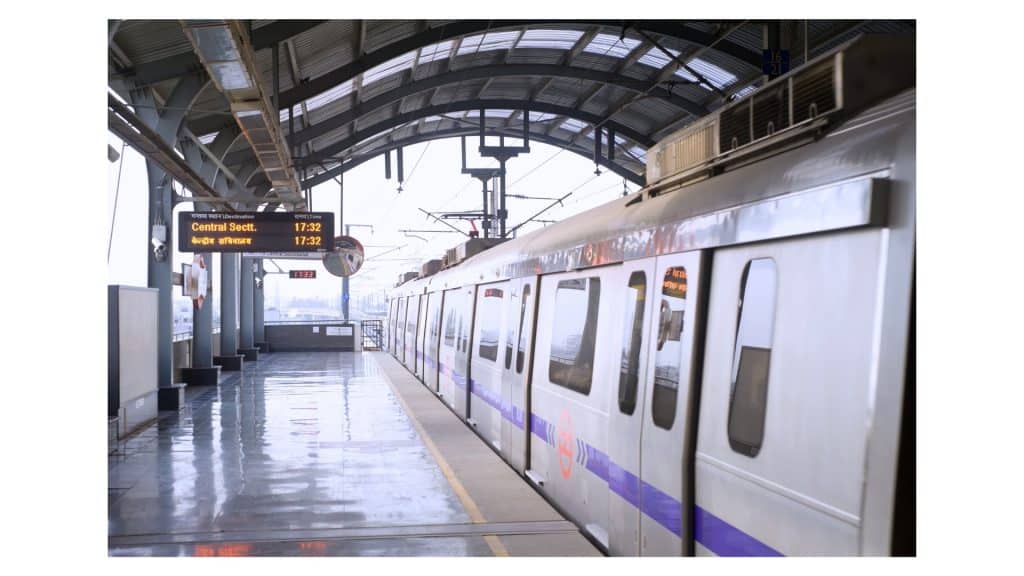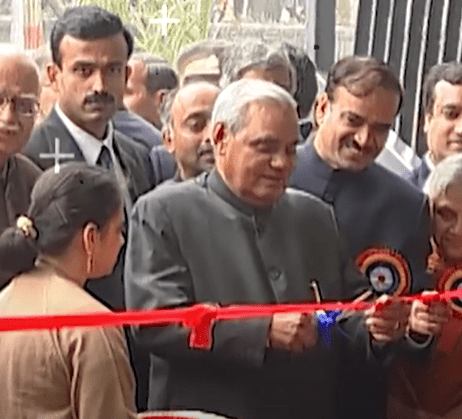The underground revolution: How Delhi Metro transformed urban travel and city dynamics

The Delhi Metro has revolutionized transportation in the capital, providing a fast, efficient, and environmentally friendly way to commute. Covering over 390 kilometres with 286 stations, it connects the city’s various areas, offering a reliable alternative to road travel.
Serving more than 4 million passengers daily, the Metro helps ease traffic congestion and reduces the use of private vehicles, which in turn lowers air pollution. Its modern, convenient service has made it a crucial part of daily life in Delhi.
The history behind the Metro marvel
The Delhi Metro, India’s first modern mass rapid transit system, was inaugurated on December 24, 2002, marking a significant milestone in the city’s transportation infrastructure. The journey toward its creation began in the early 1980s, when rapid urbanization led to severe traffic congestion and pollution in the capital. In 1995, the Government of India and the Government of Delhi established the Delhi Metro Rail Corporation (DMRC) to oversee the construction of a modern metro system.

The initial construction phase of the Delhi Metro began in 1998 under the leadership of Elattuvalapil Sreedharan, the DMRC’s Managing Director, who is widely known as the “Metro Man” for his crucial role in the project.
The first section, an 8.3-kilometre stretch from Shahdara to Tis Hazari on the Red Line, was inaugurated by our then-Prime Minister Shri Atal Bihari Vajpayee in 2002. Since that landmark moment, the Metro network has rapidly expanded, transforming Delhi’s public transportation system and the daily commute for millions.
The Delhi Metro has undergone multiple phases of expansion, now covering over stations across Delhi, and NCR regions like Noida, Ghaziabad, Gurgaon, and Faridabad. It operates several lines, including the Red, Blue, Green, Yellow, Magenta, Pink and Violet Lines, and features the Airport Express Line, offering quick access to the Indira Gandhi International Airport.
A symbol of technological innovation and urban efficiency, the Delhi Metro has also been praised for its commitment to sustainability. In 2011, the Delhi Metro became the first rail system in the world to earn carbon credits from the United Nations for reducing greenhouse gas emissions. This helped cut the city’s carbon emissions by 630,000 tonnes every year.
Beneath the City
A standout feature of the Delhi Metro is its many underground stations, which help avoid disruptions on the surface. These stations are crucial for connecting busy, densely populated areas without adding to the traffic above. This design also makes it easier for people to reach their destinations faster by bypassing the crowded streets and cutting down commute times.
By using an underground system, the Metro keeps the city’s roads less congested while still providing smooth, uninterrupted travel. The focus on being eco-friendly, with energy-efficient trains and stations, makes the Metro not only a better option for daily travel but also a greener one. Overall, the Delhi Metro has become a vital part of the city, improving transportation and promoting a cleaner environment for everyone.
The construction of the Delhi Metro, especially its underground stations, involved several key methods to ensure that the work was done safely, efficiently, and with as little disruption to the city as possible. Depending on the area and the specific challenges, different techniques were used to build these stations and tunnels. Here’s a look at the main construction methods and how they were applied.
Cut-and-Cover Method
The Cut-and-Cover method is one of the simplest techniques used in metro construction. This method involves digging a trench from the surface, building the station or tunnel, and then covering the trench back up, restoring the surface to how it was before. This method is mostly used in areas where there is enough open space for digging.
A great example is Rajiv Chowk station, one of the busiest in the Delhi Metro. Located at Connaught Place, this station was built using the cut-and-cover technique since there was enough space to dig large trenches for construction. After the work was done, the surface was restored, maintaining the historic and commercial area. Rajiv Chowk serves as a major interchange station, connecting the Blue and Yellow lines.
Tunnel Boring Machines (TBMs)
In crowded areas where digging from the surface would cause too much disruption, Tunnel Boring Machines (TBMs) are used. These massive machines dig tunnels deep underground without affecting life on the surface. TBMs are particularly useful in places with narrow streets and heavy traffic, where open excavation would be impossible.
One of the most famous examples of the TBM method is the construction of Chawri Bazaar station, located 25 meters below the surface. This station, one of the deepest in the network, is in Old Delhi, a crowded area with narrow lanes. TBMs allowed the Delhi Metro to build this station and its connecting tunnels without disturbing the bustling markets and residential areas above.
Another example is the construction of tunnels connecting stations like Janpath and Mandi House, where the TBMs were able to dig deep below busy streets without affecting daily activities above ground.
New Austrian Tunneling Method (NATM)
In areas with difficult or unstable soil conditions, the New Austrian Tunneling Method (NATM) is used. NATM allows the tunnel to use the surrounding ground for support while it’s being excavated, making it a safer option for sensitive areas.
For example, at Kashmere Gate, an important interchange station connecting three metro lines (Red, Yellow, and Violet), NATM was used. The area had complex soil conditions and was close to historical structures, so the method helped safely build tunnels without damaging nearby buildings.
Deep Excavation
Some stations require digging deep into the ground due to their depth or complexity. Deep Excavation is used for stations that go far below the surface to allow for multiple levels or interchanges between lines.
One of the best examples of this is Hauz Khas station, the deepest station in the Delhi Metro, located 29 meters underground. Hauz Khas serves as an interchange between the Yellow and Magenta lines, and its construction involves digging deep into the ground to make space for the two levels of platforms. This method required careful planning and structural reinforcement to ensure the station’s stability.
Diaphragm Wall Construction
Another important method used in Delhi Metro construction is the Diaphragm Wall (D-Wall) technique, especially for underground stations and deep tunnels. This method involves building vertical walls to hold back the soil while digging deep excavations. These walls provide support and stability during construction.
At ITO station, for instance, diaphragm walls were used during excavation. The walls were constructed first, then the earth was dug out inside these walls, allowing for deep underground station construction without risking collapses or damage to nearby roads or buildings. This method ensured that construction could continue safely in busy and heavily trafficked areas.
More Examples of Metro Construction
Throughout the construction of the Delhi Metro, different techniques were used based on the needs of the area. For example, at Central Secretariat station, which connects the Yellow and Violet lines, a combination of cut-and-cover and deep excavation was used to create the multi-level station. Similarly, Jor Bagh and INA stations also used deep excavation to create the necessary space for the complex interchange structures between the Yellow and Pink lines.
The Delhi Metro’s underground network is a result of smart engineering and the use of different construction techniques tailored to the needs of each area. The metro’s impact is enormous, removing around 3 lakh vehicles from Delhi’s roads daily, helping ease congestion. As the network continues to expand across the National Capital Region (NCR), it plays a critical role in improving urban mobility and reducing the city’s carbon footprint, making it a vital infrastructure for millions of commuters.
Fun facts related to Delhi Metro:
Driverless Trains: The Delhi Metro has introduced driverless trains on certain routes, starting with the Delhi Metro Magenta Line, marking a new era of automation in public transport.
Fastest Expansion: The Delhi Metro holds the record for the fastest metro expansion in the world, completing massive stretches of track in record time, and improving connectivity across the city.
Women-Only Coaches: Every train has a women-only coach for female passengers, which has helped improve the safety and comfort of women travelling during busy hours.
Art Stations: Some stations, like Mandi House and INA, are known for their beautiful art galleries and installations, making commuting a more culturally enriching experience.
Here are some FAQs for the Delhi Metro:
Q. What is the opening time of the Delhi Metro?
The Delhi Metro starts its operation at approximately 5:30 AM, with minor variations based on the specific line and station.
Q. What is the closing time of the Delhi Metro?
The Metro closes its operation around 11:30 PM, with minor variations based on the specific line and station.
Q. How can I purchase tickets?
You can purchase tokens from ticket counters or vending machines at stations. Alternatively, you can use a Smart Card, which offers a discount on fares and is rechargeable.
Q. How can I book a QR ticket for the metro, and which apps can I use for booking? You can also book QR metro tickets using apps like Paytm, PhonePe, Whatsapp, ONE-Delhi, DMRC SARATHI, etc.
Q. Is there a mobile app for Delhi Metro?
Yes, the DMRC offers a mobile app that provides route maps, fare calculators, station information, and updates on train schedules.
Q. How often do the trains run?
Trains run at intervals of 2 to 5 minutes during peak hours and 5 to 10 minutes during non-peak hours.
Q. Is the Delhi Metro accessible for people with disabilities?
Yes, the Delhi Metro is designed to be accessible for people with disabilities, including elevators, ramps, and designated spaces in the coaches.
Q. Can I carry luggage on the Delhi Metro?
Yes, you can carry luggage, but there are restrictions on size and weight. The maximum allowed size is 60 cm x 45 cm x 25 cm, and the weight limit is 15 kg per piece.
Q. Is photography allowed in the Delhi Metro?
Casual photography using mobile phones is permitted. However, professional cameras and photography for commercial purposes require prior permission from DMRC.
Q. What should I do in case I lose something in the Metro?
You can contact the station control room or file a lost property report at the customer care counter. You may also contact the DMRC helpline.
Q. Is there Wi-Fi available in the Delhi Metro?
Yes, free Wi-Fi is available at select stations and on specific routes within the Delhi Metro network.
Q. Are there any special discounts available for students or senior citizens?
Currently, the Delhi Metro does not offer special discounts for students or senior citizens. However, the Smart Card provides regular fare discounts.
Q. Can I take my bicycle on the Delhi Metro?
Yes, bicycles are allowed on the Delhi Metro, but only on weekends and national holidays, and you must use the last coach for this purpose.
Q. What are the rules regarding food and beverages in the Delhi Metro?
Eating, drinking, or chewing gum is not allowed inside the Delhi Metro trains or on the platforms to maintain cleanliness and hygiene.
Q. What safety measures are in place in case of an emergency?
All trains are equipped with emergency alarms, and every station has fire safety systems. Security personnel are present, and there are CCTV cameras throughout the network.
Q. Are pets allowed on the Delhi Metro?
No, pets are not allowed on the Delhi Metro, except for guide dogs for visually impaired passengers.
Q. How do I know which line to take to my destination?
You can refer to the route maps at stations or on the DMRC mobile app, or use Google Maps, which also provides detailed route options for Delhi Metro stations
Read more: Latest



